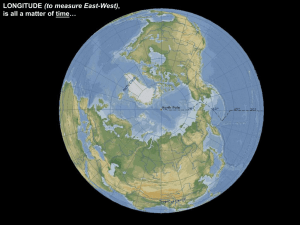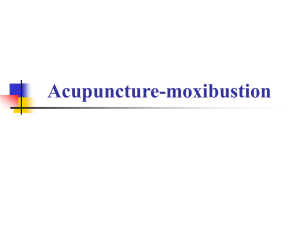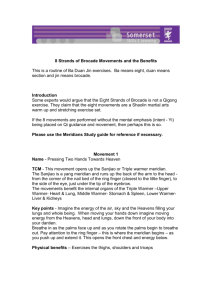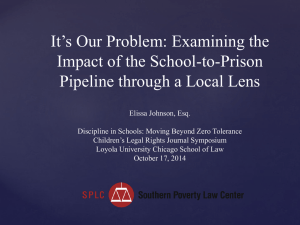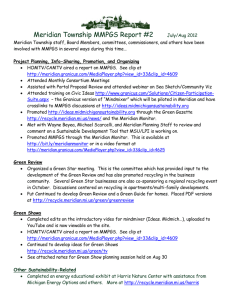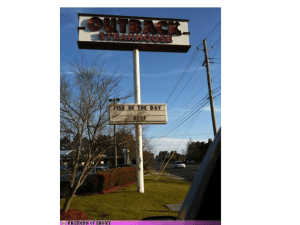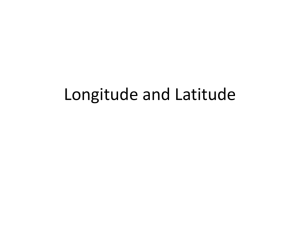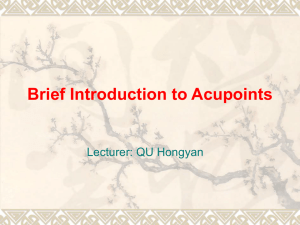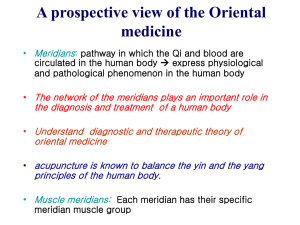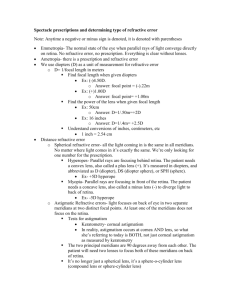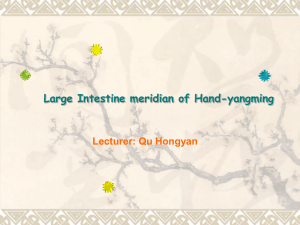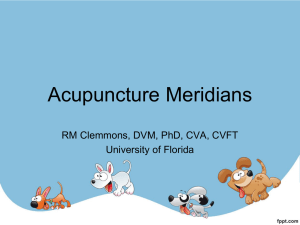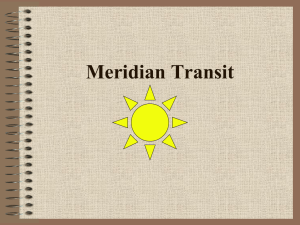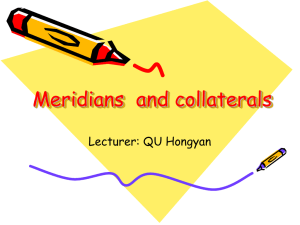Dr. Tan`s Acupuncture 1, 2, 3
advertisement
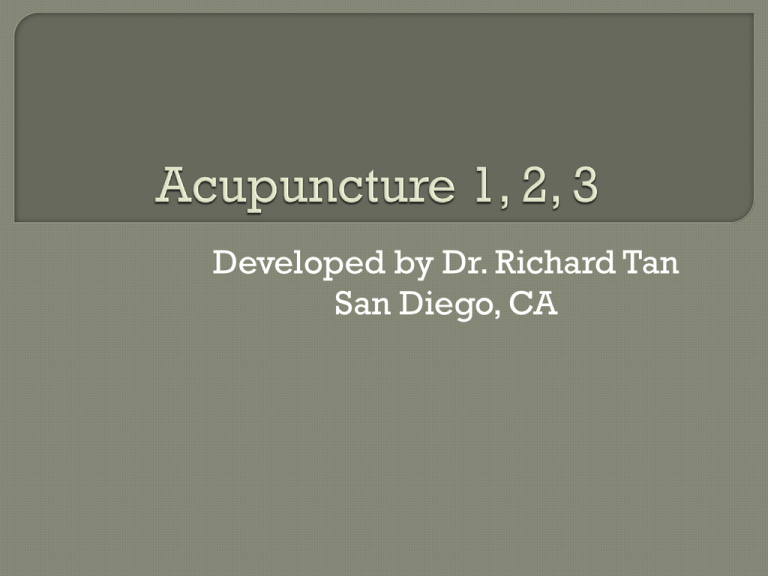
Developed by Dr. Richard Tan San Diego, CA ACUPUNCTURE 1, 2, 3 3 OTHER BOOKS BY DR. TAN Simple and effective method for treating all types of pain Patients can often be treated sitting in chair without undressing Pain improvement is immediate Treatment time 30-60 minutes Use one to 12 needles (varies) No electricity or Moxa May need to repeat treatments at various intervals 1. Identify the affected “sick” meridian(s) 2. • Determine the balancing 3. Chose the acupoints to use or “treating” meridian(s) Assess desired response If no improvement, reassess Leave needles for 30-60 min. Dr. Tan’s balancing meridians: first method: (opposite side) LR-MH; TH-GB; KI-HT; SI-BL; SP-LU; LI-ST Dr. Tan’s balancing meridians: third method: (opposite side) TH-MH; GB-LR; SI-HT; BL-KI; LI-LU; ST-SP DR. TAN’S METHOD 1. Identify “sick” meridian: • Left hip Gall Bladder (GB 30) • 2. Determine treating or balancing meridian (s): Right arm San Jiao 3. Determine the acupoint(s) Using the “mirror format” Palpate for “ashi” (tender) points Right arm SJ 14 was chosen NEEDLE IN SJ 14 DR. TAN’S METHOD Left hip pain was 8/10 Needle was left for 30-60 min. No electricity or moxa Patient was able to continue to work at her desk After treatment, hip pain was essentially gone. Patient was very happy. But pain gradually returned after 24 hours. NEEDLE IN SJ 14 DR. TAN’S METHOD The same procedure was repeated several times over the course of a month with similar benefits. Unfortunately, MRI showed severe OA and AVN and patient is scheduled to have elective surgery NEEDLE IN SJ 14 70 year old man with osteoarthritis and controlled DM II and remote B/L THR’s c/o one month hx LBP, • 3/10 at rest, 8/10 severity with activity • No radiation or paresthesias • Localizes pain around left L4 to S2 level Video of Tan's balance method of acupuncture for LBP.pptx 1. Determine the affected median: This case: left lower back “bladder meridian” at L4-S2 2. Find the balancing meridians: a. Small intestine meridian (synergistic meridian) b. Lung meridian c. Kidney meridian (coupled meridian) 3. Determine the acupoints using the mirror method or the imaging method. a. SI 3-7 b. LU 6-10 c. KI 2 – 9 (palpate for “ashi” points) Video of Tan's balance method of acupuncture for LBP.pptx Daily 60 min treatment x 3 days Declined LBP treatment after that continued to improve and he was able to exercise on the treadmill and be free of disabling back pain 1. Determine the “sick” meridian: for lateral epicondylitis: Large Intestine (LI 11) 2. Find the balancing “treating” meridians: A. Stomach meridian (on the opposite leg) B. or C. Lung meridian (opposite arm) 3. Determine the acupoints using the mirror method A. ST 35 (opposite leg) B. or C. Lu 5 (opposite arm) (palpate for “ashi” points, which are likely more therapeutic) Leave needles in for 30-60 minutes, no electricity or Moxa. May repeat daily or as needed. 1. Determine the “sick” meridian(s): Stomach meridian (St 35) 2. Find the balancing “treating” meridians: a. Large intestine meridian (arm, opposite side of the body) b. or c. Spleen meridian (opposite leg) 3. Determine the acupoints using the mirror format: a. LI 11 (opposite side) b. or c. SP 9 (opposite side) (palpate for “ashi” points, which are likely more therapeutic) Leave needles in for 30-60 minutes, no electricity or Moxa. May repeat daily or as needed. * LI 11 is effective for treating knee pain of various etiologies. (use arm on opposite side of body from painful knee.) 1. Locate the pain and determine the “sick” meridian(s) 2. 3. Determine the balancing or “treating” meridian(s) Using the mirroring format or the imaging format, determine the acupoints use “ashi” points Pain should improve immediately.

